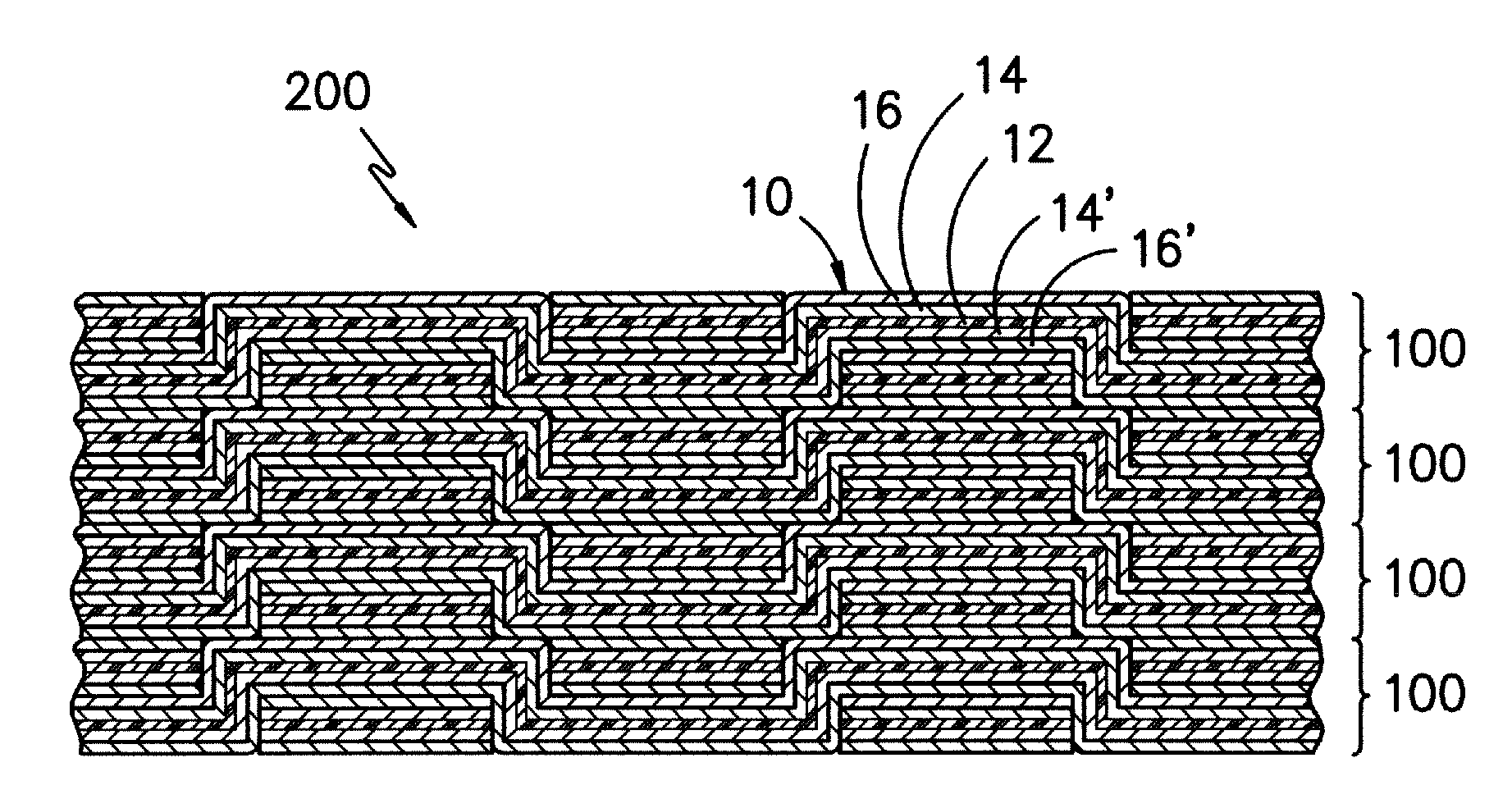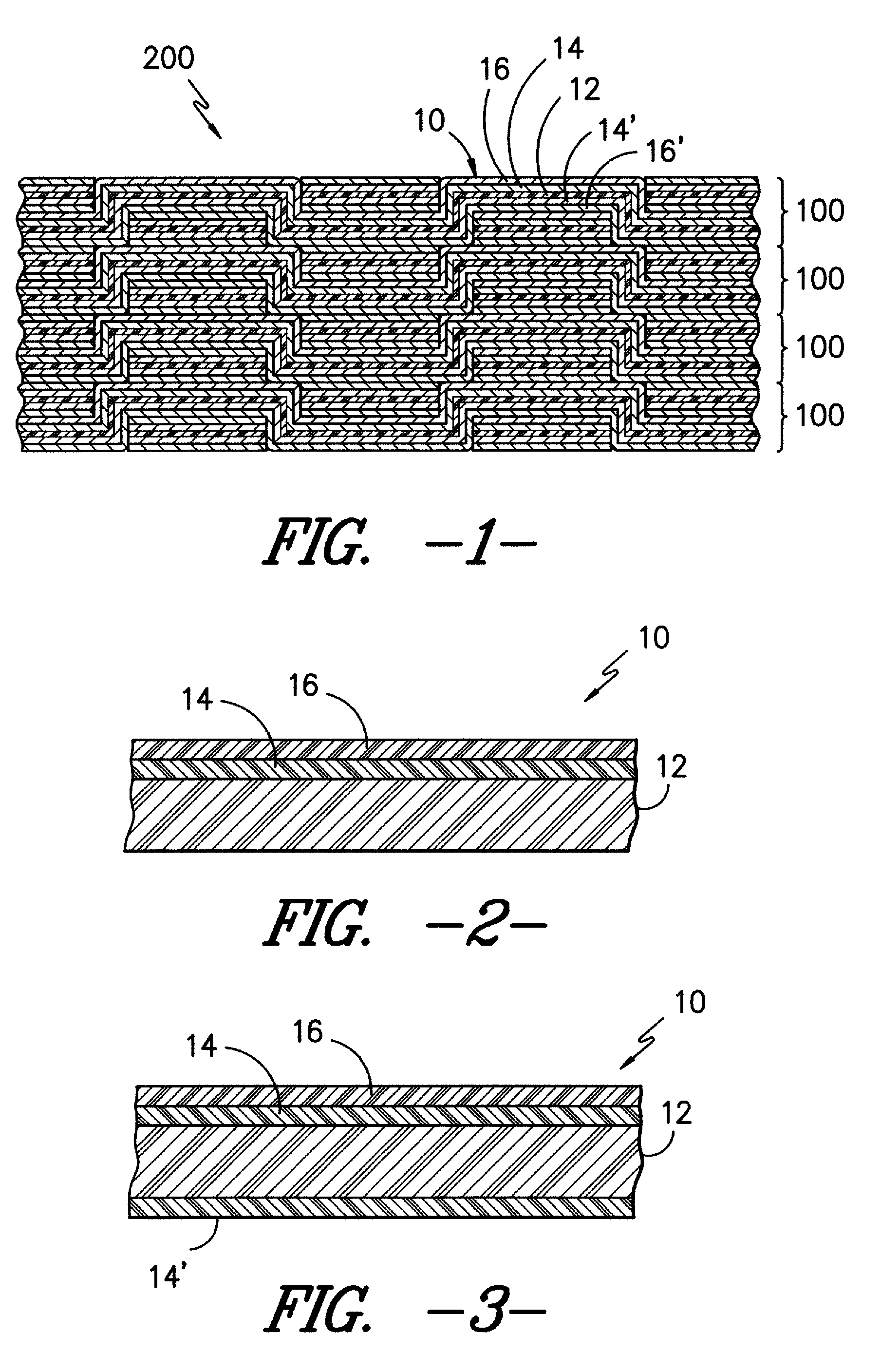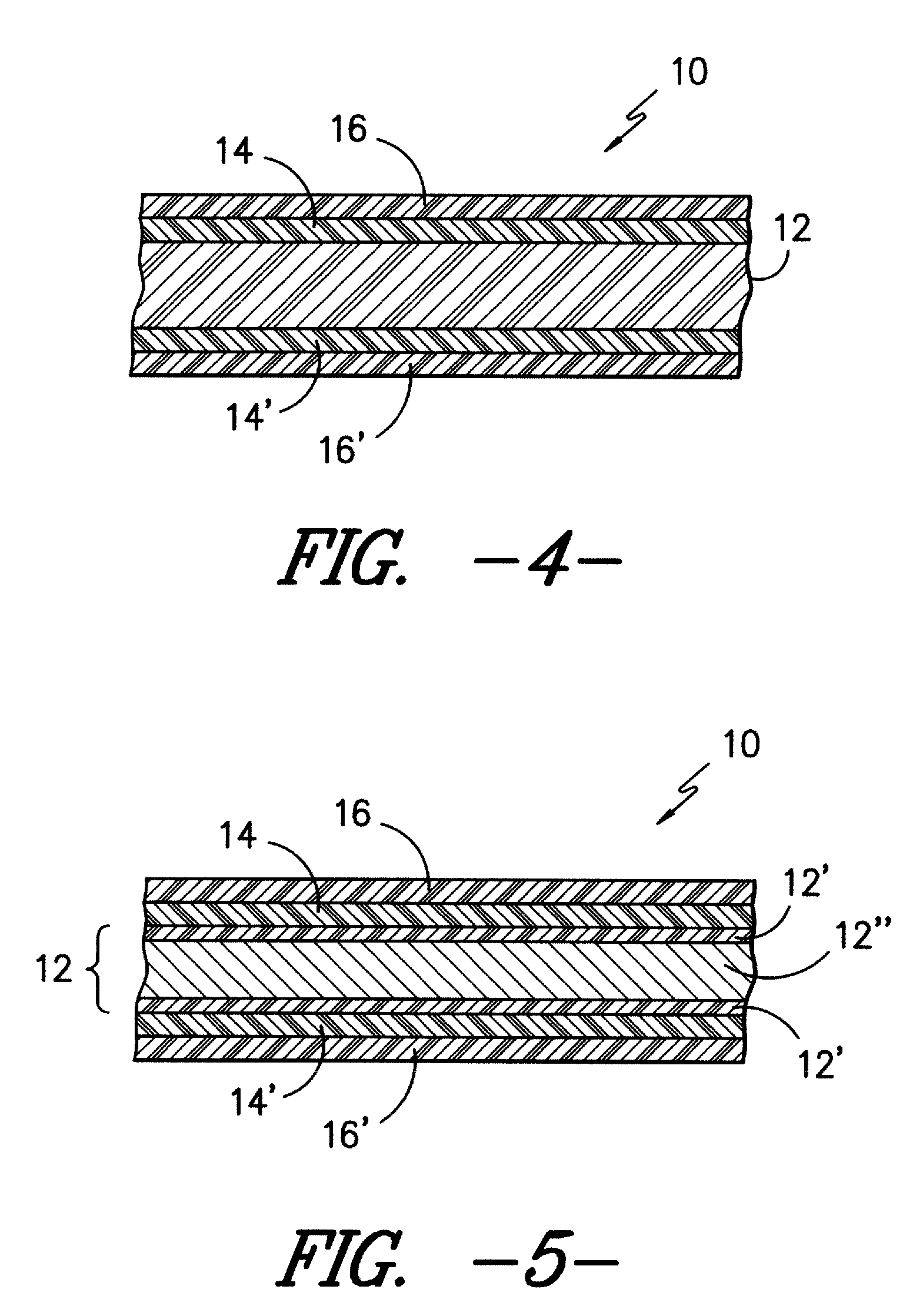Consolidated Fibrous Structure
- Summary
- Abstract
- Description
- Claims
- Application Information
AI Technical Summary
Problems solved by technology
Method used
Image
Examples
control example 1
[0068]Woven fibrous layers were formed from monolayer polypropylene tape fibers in a plain weave with a fabric weight of 0.3 lb / yd2. Ten (10) fiber layers were cut to a foot square (12″×12″) and stacked. The layers were placed between two aluminum platens consolidated at various temperatures (T=320° F., 300° F., 250° F.) and pressures (P=2500 psi, 50 psi) for 10 minutes of heating time. The sample was then subsequently cooled to 100° F. The cooling rate was approximately 20° F. / minute.
control example 2
[0069]Woven fibrous layers were formed from tape fibers in a 2×2 twill weave with 11 ends / inch and 11 picks / inch. The tape fibers had a size of 1020 denier per fiber, a width of 2.2 mm, and a thickness of 65 μm. The tape fibers had a polypropylene core having a tensile modulus of about 19 GPa surrounded by two first layers. The first layers contained a propylene copolymer having Mw of 280,000 g / mol, vicat softening point of 107° C., a melting temperature of about 117° C., and viscosity of 5,700,000 cP at 170° C. The first layers comprised about 15% by thickness of the total tape fiber. The fiber had a tensile strength of approximately 7 g / d and a tensile modulus of approximately 15 GPa.
[0070]Ten (10) fiber layers were cut to a foot square (12″×12″) and stacked. The layers were placed between two aluminum platens at various temperatures (T=300° F., 250° F.) and a pressure of 50 psi for 10 minutes of heating time. The sample was then subsequently cooled to 100° F. The cooling rate was...
working example 1
[0071]Woven tape fibrous layers were formed as described in Control Example 2. Licocene® 2602, a metallocene type of propylene-ethylene co-polymer obtained from Clariant was used as received. Licocene® 2602 had a viscosity of 6000 cP measured at 170° C. and a melting temperature of 75° C. The tensile modulus of Licocene® 2602 is measured to be approximately 0.7 MPa; has an elongation at break of 760% and cohesion strength of 9 MPa. The crystallinity of the polymer is ˜17%. A 2% by weight concentration of Licocene® 2602 in toluene was prepared by heating the appropriate amount of Licocene® 2602 pellets in toluene at 80° C. for 10 minutes. After obtaining complete dissolution of the polymer, the solution was cooled to room temperature with continuous stirring. The Licocene® / toluene solution was then sprayed uniformly onto 12″×12″ woven tape fibrous layers with a 2 wt % dry add on. The layers were then dried overnight at room temperature.
[0072]After drying, ten (10) fiber layers were s...
PUM
| Property | Measurement | Unit |
|---|---|---|
| Temperature | aaaaa | aaaaa |
| Length | aaaaa | aaaaa |
| Fraction | aaaaa | aaaaa |
Abstract
Description
Claims
Application Information
 Login to view more
Login to view more - R&D Engineer
- R&D Manager
- IP Professional
- Industry Leading Data Capabilities
- Powerful AI technology
- Patent DNA Extraction
Browse by: Latest US Patents, China's latest patents, Technical Efficacy Thesaurus, Application Domain, Technology Topic.
© 2024 PatSnap. All rights reserved.Legal|Privacy policy|Modern Slavery Act Transparency Statement|Sitemap



